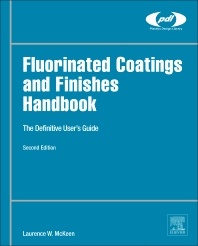Answer to Al's Arrested Alkyd Development

Editor’s note: Following is Keith Moody’s answer to the conundrum presented in “Al’s Arrested Alkyd Development” in the December 2019 issue of PCI.
Al Kidd told Polly Mertz a story about developing an alkyd coating resin 35 years earlier that matched the performance of a linseed oil alkyd but used a different drying oil. After overseeing the production of the resin in the plant, Al went directly home, where his wife demanded that he take off his clothes before coming into their apartment. Why did Al’s wife, without even looking at Al, insist that he remove his clothes in the hallway?
Because as soon as Al Kidd entered the apartment, even though Al’s wife didn’t see him, she could SMELL him and the stench from his clothes after being in the plant most of the night. The new alkyd resin he had made had replaced linseed oil with menhaden oil, a fish oil with very similar drying properties as linseed oil.
Because Al oversaw the new alkyd batch in the plant, his clothes were saturated with the odor of fish oil coming from the hot alkyd processing. Menhaden oil contains a plethora of carbonyls, aldehydes, esters, ketones, alcohols and hydrocarbons responsible for the strong odor. Because these chemicals are low molecular weight and volatile, many can be detected at very low levels. When Al Kidd first used the unrefined fish oil, he had been slightly sickened by the smell, but as he had used it day after day, over the past several weeks, he had not noticed the strong smell that permeated his clothing. He didn’t notice the smell, because his nose had been desensitized to the strong odor of the fish oil.
Kienle, of General Electric, came up with the term “alkyd”, shorthand for the reaction of alcohol and acid. His major contribution in 1927 was to add drying oils to the previous known reaction products of glycerol and phthalic anhydride. The drying oils introduced unsaturated substituents along the backbone of the polymer that allowed for crosslinking through oxidative drying. This innovation allowed these resins to be used in a number of paints, lacquers and varnishes.
Al understood that if he could find an oil with similar drying properties to linseed oil, he could develop alkyds with similar properties without using linseed oil. He also knew that the primary way to measure the drying properties of oils was determining the amount of unsaturation in the fatty acids of the oil. This unsaturation is measured by iodine values (IV). Even though the composition of linseed oil and menhaden oil are very different as measured by the amount and types of fatty acids, the IV values are very similar.
One estimate is that up to one half of the industrial fish landed in the United States is menhaden. Menhaden is a bony, oily fish, similar to sardine and herring, composed primarily of dark meat and not popular as human foods, at least not 35 years ago.
This was before the FDA granted GRAS (Generally Regarded as Safe) status to the partially hydrogenated (PHMO) and hydrogenated menhaden oils (HMO) for direct use in human food ingredients in 1989. Al had used the menhaden oil to make his alkyd 35 years ago when the oil was cheaper since it had not yet been approved in foods. Today much of the fish oil, which contains high amounts of Vitamin E, the Vitamin D group and omega-3 fatty acids, is used in oral dietary supplements and pharmaceutical applications in connection with reducing certain cardiovascular disorders. As a result, the fish has been depleted due to over fishing and is not considered a source of sustainable oil.
The omega-3 fatty acid unsaturation makes the fish oil very reactive in the curing of alkyd paints, but unfortunately also gives the fish oil high reactivity with oxygen and creates instability and formation of secondary products such as volatile aldehydes that impart the “fishy” odor. The menhaden oil that Al used in making the alkyd was not steam deodorized. This steam deodorization, often with vacuum, is now used in fish oil supplements to remove over 99% of most aldehydes in the oil, and greatly reduce that fishy odor.
For more information on alkyd resin technology, see the article “Improved Saturated Polyester and Alkyd Coatings” in the March 2013 PCI Magazine.
Looking for a reprint of this article?
From high-res PDFs to custom plaques, order your copy today!








